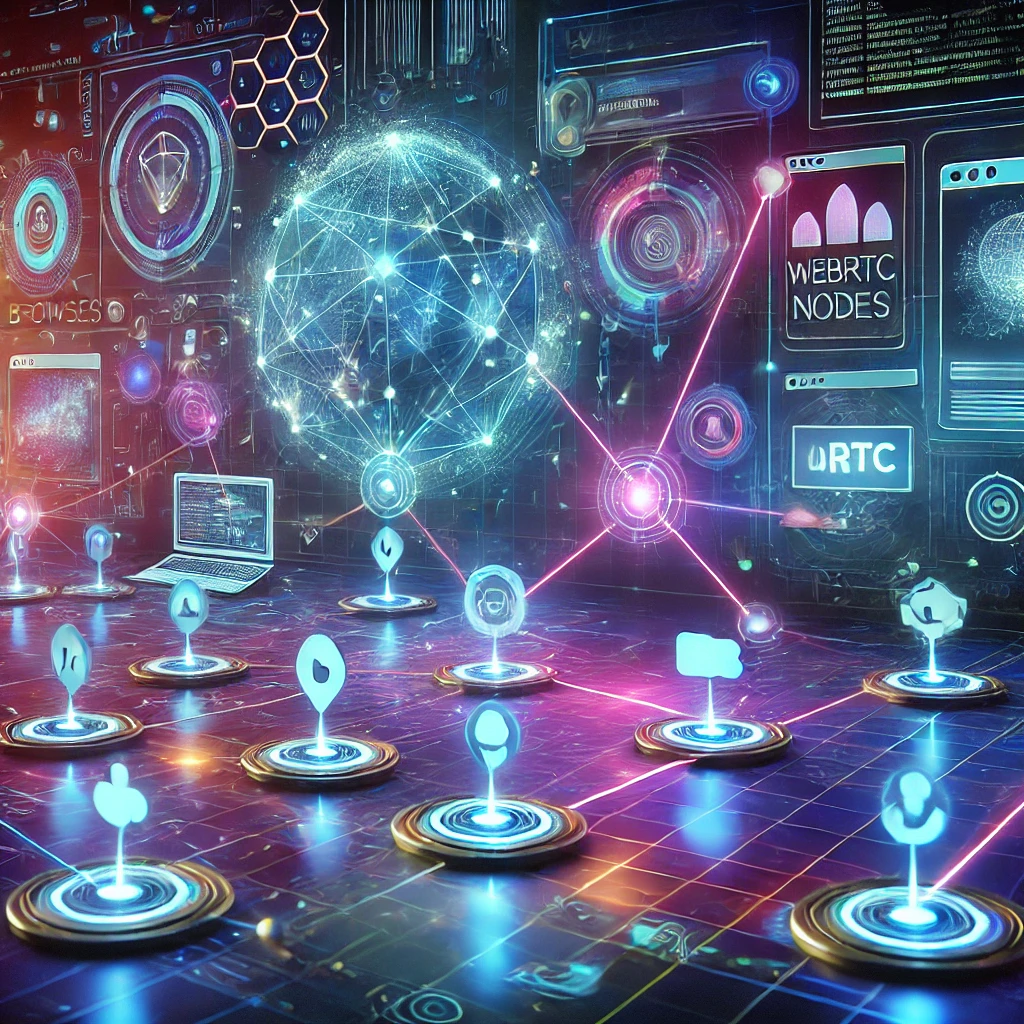Libp2p WebRTC: Portals beyond Firewalls
 Neha Kumari
Neha Kumari
What if I told you that in a world full of firewalls, NATs, and relays, there's a way to connect peer-to-peer directly*—like an invisible handshake between two strangers in the multiverse?*
Enter Libp2p WebRTC, where browsers become first-class network citizens. No middlemen, no relays—just pure, seamless connectivity. Today, let’s dive into how we unlocked the WebRTC experience in Libp2p—breaking limits, crossing boundaries, and making peer-to-peer truly universal.
What is WebRTC in Libp2p?
Before we jump into the real magic, let's get a quick snapshot of what we're dealing with.
💡 Libp2p is the peer-to-peer networking stack that powers networks like IPFS, Ethereum, Filecoin, among all—allowing peers to discover, connect, and communicate regardless of their environment.
💡 WebRTC in browsers facilitates real-time, peer-to-peer communication for video calls, messaging, and file sharing. However, browsers are restricted environments, which means:
No direct access to TCP/UDP sockets like native applications.
Dependency on signaling servers for initial handshakes.
NAT traversal issues require ICE (Interactive Connectivity Establishment) for connectivity.
Think of it as a high-speed train system—but only accessible through specific stations (signaling servers), and sometimes, finding a route through tunnels (firewalls) is a challenge.
💡 WebRTC in Libp2p: Breaking the Barriers
Libp2p takes WebRTC and supercharges it for true peer-to-peer (P2P) networking, solving the limitations of traditional browser-based WebRTC. How?
1️⃣ WebRTC-Direct:
Allows direct, relay-free connections between peers.
Eliminates dependency on external TURN relay servers.
Uses ICE & SDP negotiation to establish connectivity.
2️⃣ Browser to Server Connections:
Browsers can now communicate directly with Libp2p nodes (Go, Rust, Node.js peers).
No need for centralized intermediaries, making it truly decentralized.
3️⃣ Universal Connectivity:
WebRTC peers can interact with non-browser Libp2p nodes over multiple transports.
Fallback mechanisms like WebSockets ensure robustness when WebRTC fails.
Now, we can do something groundbreaking—connect browsers directly to servers without relays. No centralized dependencies, just direct peer-to-peer networking. [For more info, read this blog ]
The Breakthrough – WebRTC Private-to-Public Connectivity
This is where things get exciting. As part of my work on Libp2p, I contributed to js-libp2p WebRTC enhancements, enabling WebRTC private-to-public connectivity.
✅ Public Node.js Peer (like a ‘beacon’ in the network) can now:
Run a WebRTC-Direct listener
Accept connections from private peers (browsers) directly
Handle SDP exchange without relying on external signaling relays
✅ Private Browser Peer (hidden behind NATs/firewalls) can:
Dial a direct connection to the public Node.js peer
Establish a WebRTC session without relays
Maintain end-to-end encrypted communication
The Future of WebRTC in Libp2p
This is just the beginning. The work on WebRTC in Libp2p continues to expand. Future developments include:
🌟 Better NAT traversal using Hole Punching
🔗 More stable WebRTC signaling via enhanced SDP handling
🚀 Scaling P2P applications beyond browser limitations
Imagine a future where your browser seamlessly connects to any peer across the universe—no restrictions, no barriers, just limitless possibilities.
🎬 And that’s the power of WebRTC in Libp2p! 🚀
Conclusion

The internet was built on centralized systems. Libp2p WebRTC breaks that mold. We’re not just unlocking connections—we’re unlocking the multiverse of possibilities. This is the invisible handshake that will redefine how peers interact, collaborate, and connect—without boundaries, without intermediaries.
———————————-Thank You————————————————
Reference links:
https://blog.libp2p.io/libp2p-webrtc-browser-to-server/
https://docs.libp2p.io/guides/getting-started/javascript/
https://docs.libp2p.io/guides/getting-started/webrtc/
Subscribe to my newsletter
Read articles from Neha Kumari directly inside your inbox. Subscribe to the newsletter, and don't miss out.
Written by

Neha Kumari
Neha Kumari
Astrophile? Nerd? Tech-savvy? alchemy of heterogeneous elements, if either above matches your vibe, let's connect and talk!